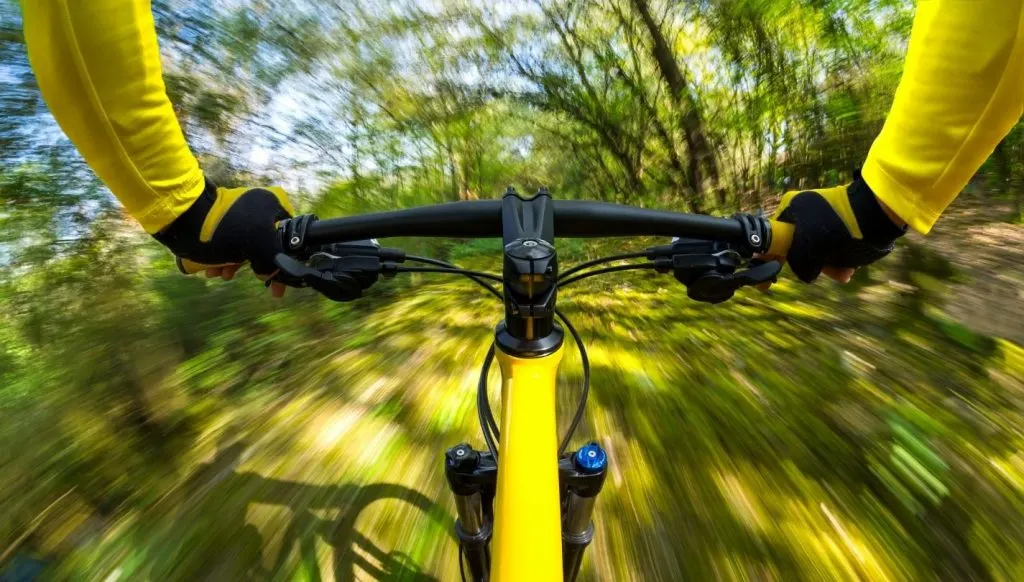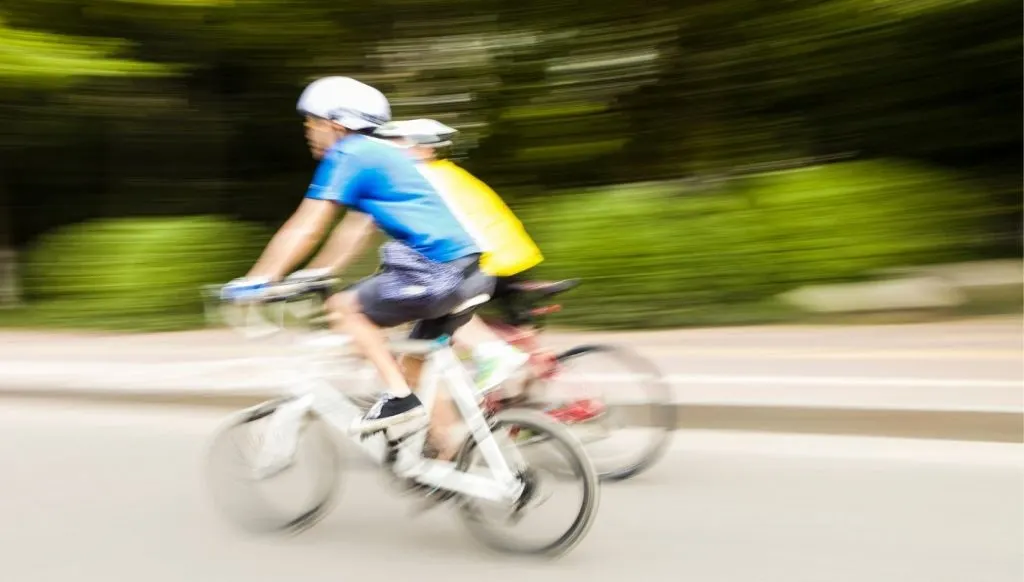
Friction is a drag. And for those of who like to cycle at speed, every little bit of drag or weight makes a difference to how fast you can move. Which brings me to tire liners…can they slow down your cycling? And if so, what can you do about it?
Tire liners add 6oz of mass to your bicycle. This additional mass creates rotational weight, which slows down acceleration and uphill movement. Overall this may not slow you down when the slowdown induced by punctures is taken into account. Unlined wheels feel lighter, which may inspire effort.
Whether or not to line up is not indicated finally by the bland physics of rotational inertia though. We need to take into account a few factors to make the right decision as to whether tire liners will in fact slow you down or not. Let’s take a deeper look to help you figure out which is the better option for you…
What Are Tire Liners?
Tire liners are plastic shields placed between the tube and the inner side of the tire casing. Sometimes made of other materials, they act as a barrier to protect the tube from objects that pierce the tire. They are effective against thread-side punctures, not protrusions from the side of the wheel.
Installation of the liners begins with the removal of the tire from the rim. The liner is fitted to the inside of the tire, making sure that it is centered. The lined tire is then refitted with a tube and mounted back onto the rim. The tire tube is inflated as before.
How Do Tire Liners Slow You Down?
The only claim against tire liners and speed is that they add overall mass, which slows your ride. Many cyclists have warmed to this warning, causing them to avoid the liners, leading to efforts to design lighter shields with the same protective strength.
Rotational Mass And Acceleration
What’s particularly worrisome about tire liners is that they add weight to a part of the bike where the wheel’s retardant effect of weight gain is maximized. To see why an extra ounce on the wheel is more potent than the same mass applied to the frame, we need to consider the physics of rotational mass.
Kinetic energy is required for acceleration. The energy is derived as the product of the squared terminal velocity and half the mass of the moving body. When that mass lives in the wheel, what is required is to calculate and add the corresponding angular velocity induced in the wheel for the required acceleration to be sustained.
The reason for this addition has to do with slipping and rolling. If the bike were to accelerate without rotation, then it wouldn’t matter where the weight is added. But rotating wheels require kinetic energy in a plane orthogonal to the translational plane in which the forward motion of the bike happens.
In the case of a tire liner, it contributes to the overall kinetic requirement twice. Once when the half its square mass is added to the translational energy requirement. And a second time when that same quantum is applied to the rotational requirement.
Critically, energy is required only for acceleration. Thus the extra weight has no bearing during coasting and makes a positive contribution during downhill acceleration.
The retarding effect is felt when accelerating over and above gravity. This happens when going uphill, accelerating on a flat plane, or accelerating downhill faster than the pull of gravity.
But again, overall mass is not the only consideration when thinking about how it will affect your ride…
The Psychology Of Speed

Apart from considering the absolute value of the numbers, we should have regard to some softer factors that may be more relevant.
- Significance: Ultra-light tire liners add a cumulative 2.25oz. Before whipping out the rotational force calculator, it’s worth asking what the significance of that weight is. For most runners, it vanishes in the variance of their body weight and kit.
- Motivation: On the flipside, tires that are only marginally lighter might buoy the cyclist’s performance. This is due to the psychological boost from “knowing” that she is engaging in high-performance equipment.
- Attribution: Flipping again, we should guard against an excessive focus on weight. The further you are from elite performance, the likelier it is that your speed is marred by inefficient energy use, bad posture, poor configuration, orientation, and misalignment of other performance factors.
There is insufficient research to generate an accepted unified model of cycling performance. There is no quantification of thresholds for rotational mass that would impede performance at given base levels. An obsession with wheel weight can take the eye off the things that really are holding you back.
How Do Tire Liners Enhance Your Speed?
Tire liners are not one-dimensional as regards performance. Having talked about the cons tire liners can have on speed, it’s also important to consider the pros.
Casing Offset
Many riders have reported that they are able to run lighter-than-normal casings when using certain inserts, specifically those that take up a lot of volume while providing sidewall support. This results in a net loss of weight.
Speed And Punctures
You wouldn’t consider tire liners if you were not exposed to the risk of punctures. In that case, consider the speed-retardant effect of punctures. They are especially important in a race, where the downtime for puncture repair will spoil a target performance.
Work And Training
Thorns puncture not only your wheel. They punch a hole in training plans, where the lack of continuity impeded growth. Developing efficiency, fitness, and speed requires uninterrupted training programs. Tire liners help ensure that consistency.
What Are The Alternatives to Tire Liners?
Thicker versions of tires and inner tubes are commercially available. These provide protection against sharp debris like glass shards and thorns. Their extra weight makes them non-standard.
Before fitting a tire liner, consider whether you already have reinforced tire or tubing, as a liner would not even be needed in this case.
A new version of the reinforced tire includes a strip of Kevlar on the underside of the tire. This acts as a shield to protect the tube from the protrusion of thorns, splinters, and similar objects.
Tubeless tires present a second alternative. They’ve been proven in the automotive industry, which deprecated tire tubes in the 1950s. A conversion to bicycles followed.
Tubeless tires contain a sealant to cleave the tire to the wheel rim. As a bonus, this provides a level of puncture resistance. The tires generally are more robust. However, there are problems with this technology. Here are some of them…
- Tubeless tires require special components, including rims, sealant, and rim stops.
- They require special mounting techniques.
- They are sensitive to tire pressure.
- More maintenance is required, specifically to guard against the drying of the sealant, which needs to be replaced over time.
- They work well on mountain bikes only. The performance on road bikes has led to them being discouraged in that application.
Finally, Slime is worth a mention. Various manufacturers provide goo that swooshes on the inside of the tube. It settles over and blocks punctures as they occur. While Slime provides a quick and easy way to fix punctures, the jury is out on its efficacy with puncture prevention.
Conclusion
Tire liners are like insurance policies – they’re bought out of necessity, not desire. If your terrain is exposed to debris, you want the protection of a happy pair of liners. The biggest performance enhancer is a continuous practice, unpunctuated by punctures!
